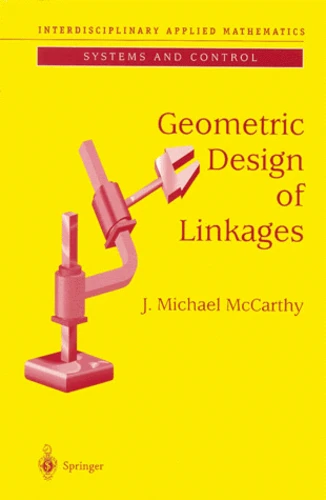Geometric Design of Linkages
Par :Formats :
- Paiement en ligne :
- Livraison à domicile ou en point Mondial Relay indisponible
- Retrait Click and Collect en magasin gratuit
- Réservation en ligne avec paiement en magasin :
- Indisponible pour réserver et payer en magasin
- Nombre de pages320
- PrésentationRelié
- Poids0.61 kg
- Dimensions16,0 cm × 24,0 cm × 2,2 cm
- ISBN0-387-98983-8
- EAN9780387989839
- Date de parution06/06/2000
- Collectioninterdisciplinary applied math
- ÉditeurSpringer
Résumé
This book presents the mathematical theory of design for articulated systems called linkages. Robot manipulators, walking machines, and mechanical hands are examples of these systems, all of which rely on simple mechanical constraints to provide a complex workspace for an end-effector.
The emphasis of this text is on linkage systems with fewer degrees of freedom than that of a typical robot arm and, therefore, more constraints. The focus is on sizing these constraints to guide the end-effector through a set of task positions. Formulated in this way, the design problem is purely geometric in character.
The theory is developed for planar linkages before moving to devices that constrain spatial rotation and general spatial displacement. This allows intuition developed from plane geometry to provide insight to the geometry of points and lines in space.
This book presents the mathematical theory of design for articulated systems called linkages. Robot manipulators, walking machines, and mechanical hands are examples of these systems, all of which rely on simple mechanical constraints to provide a complex workspace for an end-effector.
The emphasis of this text is on linkage systems with fewer degrees of freedom than that of a typical robot arm and, therefore, more constraints. The focus is on sizing these constraints to guide the end-effector through a set of task positions. Formulated in this way, the design problem is purely geometric in character.
The theory is developed for planar linkages before moving to devices that constrain spatial rotation and general spatial displacement. This allows intuition developed from plane geometry to provide insight to the geometry of points and lines in space.

